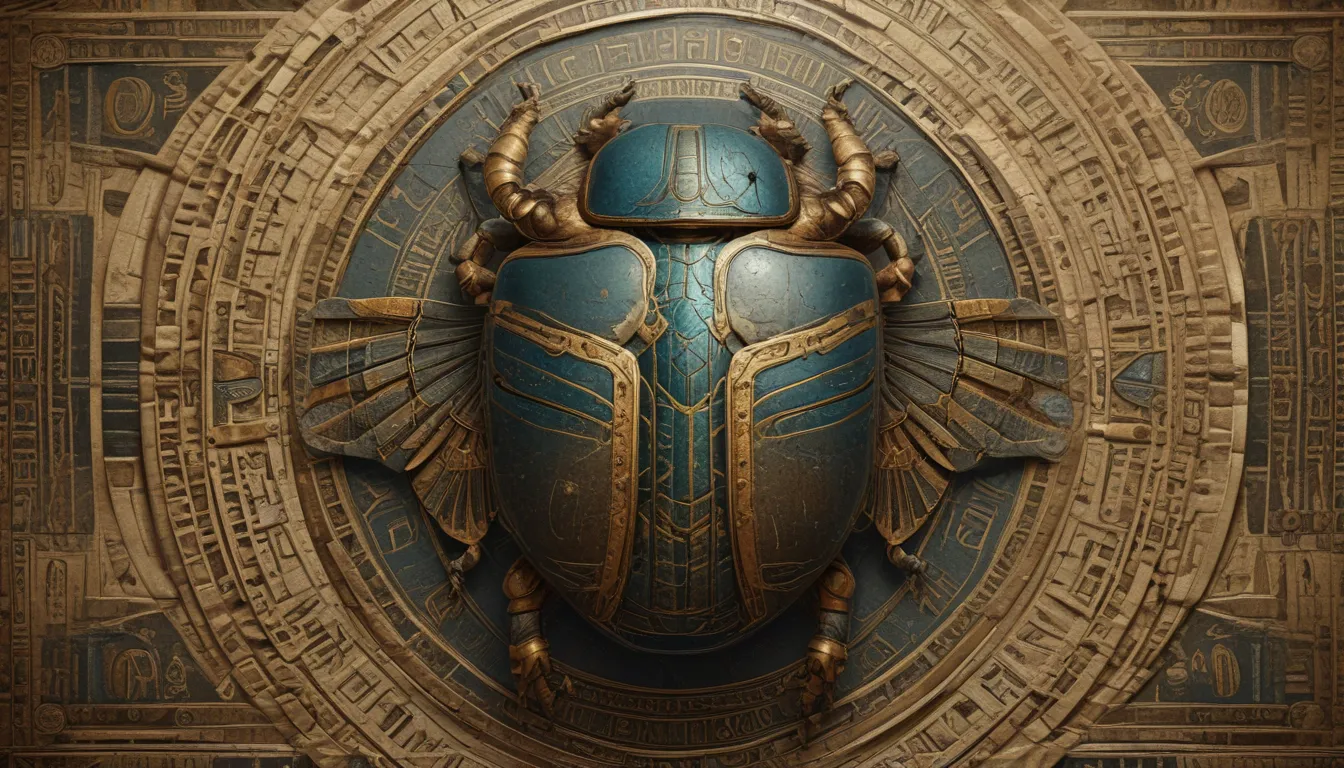The images in our articles may not match the content exactly. They are used to grab your attention, not to show the exact details in the text. The images complement the text but do not replace it.
Have you ever pondered the profound significance of the minuscule creatures that held immense reverence in ancient Egypt? Yes, we’re talking about the scarab beetles. These diminutive bugs were not just mere insects to the Egyptians; they embodied symbols of rebirth and regeneration deeply entwined in the culture and mythology of one of the most captivating civilizations in history. The ancient Egyptians esteemed scarab beetles due to their connection to mythology and their intriguing behavior of rolling dung into balls, mirroring the sun’s movement across the sky. Are you curious to delve into the astonishing facts surrounding these sacred beetles that might shift your perspective on these hard-shelled insects? From their pivotal role in ancient rituals to their unexpected presence in contemporary times, scarab beetles have a compelling narrative that merits exploration.
Unveiling the Enigmatic Egyptian Scarab Beetle
In ancient Egypt, the scarab beetle transcended its status as a commonplace insect. Resembling the dung beetle, this creature held profound symbolic importance and was revered in Egyptian mythology and religion. Scarabs were closely associated with the sun god Ra, as their behavior of rolling dung balls across the ground was likened to Ra’s role in steering the sun across the sky. This correlation rendered scarabs as symbols of rebirth, transformation, and safeguarding.
- Scarabs were frequently fashioned into amulets and seals, serving as both protective talismans and tools for imprinting or sealing documents.
Unraveling the Symbolism Encased in the Scarab Beetle
The symbolism of the scarab beetle in ancient Egypt dwells deeply within its daily appearances and actions, which the Egyptians perceived as a reflection of the celestial cycle and their spiritual ideologies.
- Egyptians believed that the scarab beetle’s act of pushing its dung ball mirrored the sun’s journey across the sky, symbolizing the cycle of life, death, and rebirth.
- Scarab amulets were commonly positioned over the hearts of mummies to defend them in the afterlife and ensure their reawakening.
A Glimpse into the Array of Scarab Amulets
Scarab amulets were not uniform accessories. These artifacts exhibited significant variations in size, material, and purpose, mirroring their importance in daily life and spiritual practices.
- Materials employed for crafting scarab amulets included precious stones, metals, and ceramics, with each material chosen for its symbolic significance and aesthetic allure.
- Certain scarabs bore inscriptions of their owners’ names and titles, serving as personal identifiers and symbols of status.
The Pivotal Role of Scarabs in Ancient Egyptian Religion
Scarabs played a pivotal role in the religious customs and beliefs of ancient Egyptians. They not only served as symbols but were integral to rituals and the conceptualization of the afterlife.
- Priests frequently incorporated scarab amulets in funerary rites, invoking the protective and regenerative powers of the scarab to benefit the departed in their voyage to the afterlife.
- The heart scarab, a significant scarab placed on the mummy’s chest, bore inscriptions from the Book of the Dead, intended to prevent the heart from testifying against the deceased during the final judgment.
The Splendor of Scarabs in Egyptian Art
The imagery of scarabs pervaded Egyptian art, from exquisite jewelry to monumental architecture, highlighting the cultural significance and aesthetic appreciation of this symbol.
- Scarab motifs flourished in jewelry design, often crafted from gold and embellished with semi-precious stones, signifying their status as objects of beauty and power.
- In architectural marvels, scarabs were depicted in temple reliefs and paintings, symbolizing the sun’s trajectory and the pharaoh’s divine rapport with the gods.
The Enduring Legacy of Scarabs in Modern Times
The allure of scarab beetles has transcended ancient Egyptian culture, leaving imprints on modern art, jewelry, and popular culture, underscoring the enduring legacy of these ancient symbols.
- Present-day scarab beetle jewelry continues to captivate enthusiasts, drawing inspiration from ancient designs and often embodying meanings of rejuvenation and defense.
- Museums worldwide exhibit collections of scarab amulets, offering insights into their historical importance and the artistry of ancient Egyptian artisans.
Unveiling Ancient Mysteries Through Scarab Beetles
Embarking on a journey into the realm of ancient Egypt, we have unveiled enthralling facts about the scarab beetle, a symbol rich in both meaning and historical significance. These creatures were not mere insects to the Egyptians; they served as potent amulets symbolizing creation, protection, and metamorphosis. Whether embellishing jewelry or adorning the tombs of the departed, scarab beetles stood as a reminder of life’s cyclical essence and the prospect of rebirth. Their significance as nature’s recyclers in agriculture further solidified their stature as symbols of regeneration. By grasping these facts, we gain a glimpse into the ancient Egyptian mentality, where nature and spirituality harmoniously intermingled. The scarab beetle emerges not just as an insect but as a pivotal entity in the spiritual and daily existence of one of history’s most captivating civilizations.
Conclusion
In conclusion, the scarab beetle unveils a mesmerizing narrative steeped in symbolism and history. From their divine association with Ra to their integral role in religious customs, scarabs stood as enduring reminders of life’s transcendent mysteries in ancient Egypt. Delve into the enigmatic world of scarab beetles, where each intricacy unravels a tapestry of ancient beliefs and cultural heritage.
Was this article insightful and enlightening?
Our devotion to disseminating credible and immersive content lies at the core of our mission. Each tidbit on our platform is contributed by real users like you, enriching our repository with a diverse array of insights and knowledge. Rest assured, every submission undergoes meticulous review by our dedicated editors to ensure accuracy and reliability. Trust in our commitment to delivering quality and authenticity as you explore and discover with us.






